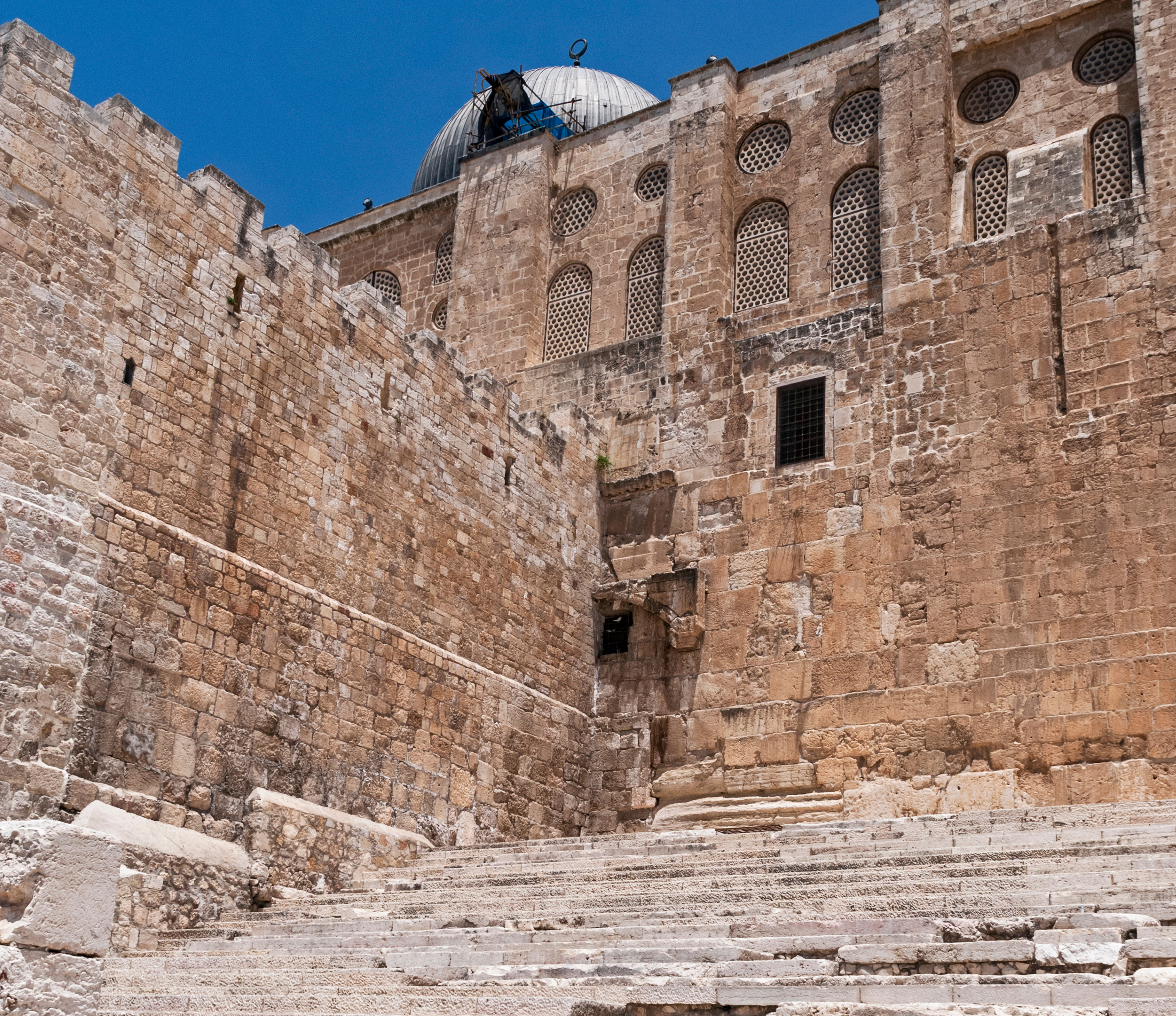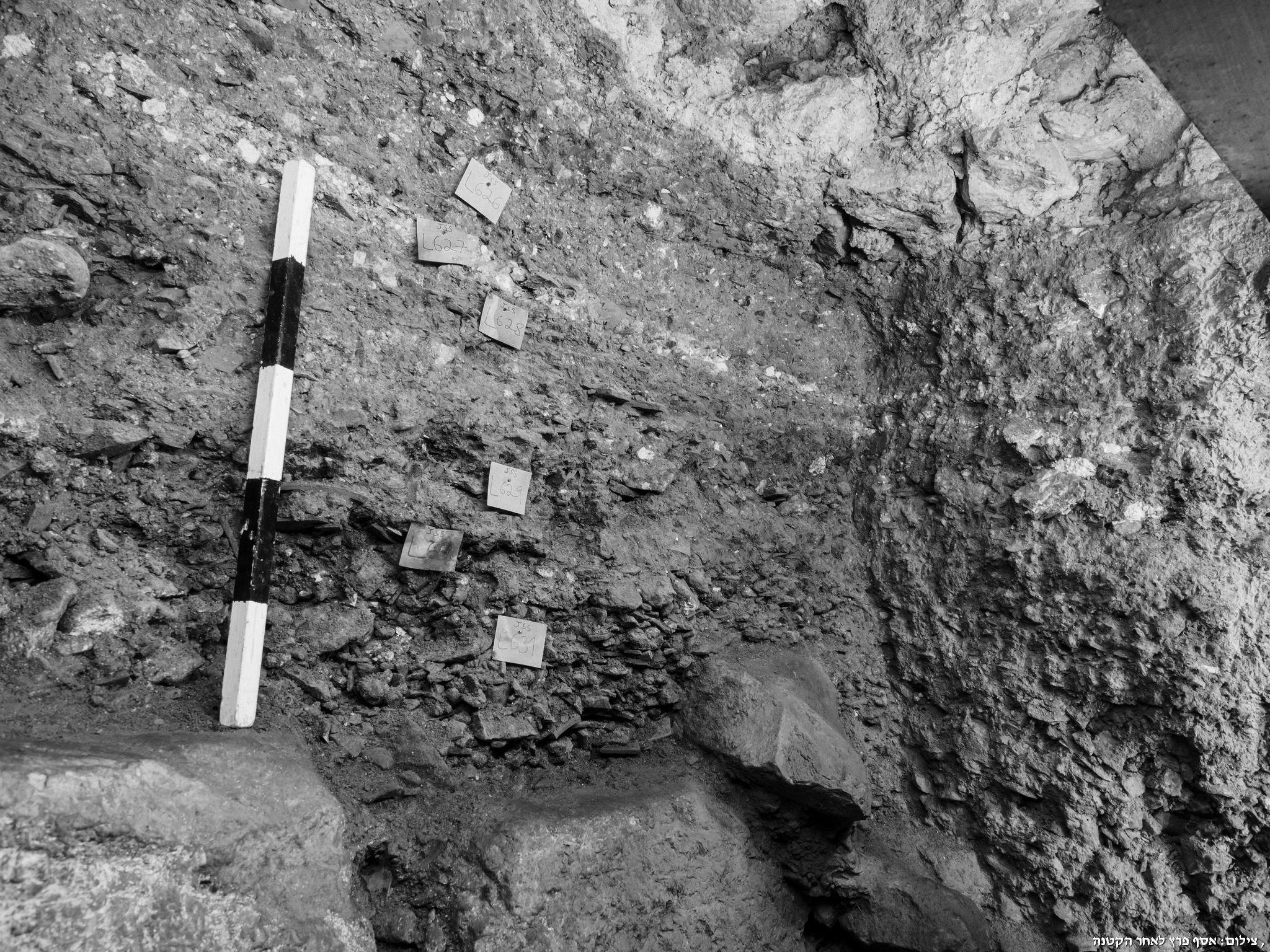Archaeologists Identify 'Lost' Jerusalem Street Built by Pontius Pilate — the Man Who Condemned Jesus to Death
The street would have taken 10,000 tons of stone to construct.

Archaeologists have identified a grand street in Jerusalem that was built by Pontius Pilate, the Roman prefect of Judea who is famous for overseeing the trial and crucifixion of Jesus.
The nearly 2,000-foot-long (600 meters) street would have connected the Siloam Pool — a place where pilgrims could stop to bathe and get fresh water — to the Temple Mount, the most holy place in Judaism. The street was likely used by ancient pilgrims on their way to worship at the Mount, the researchers said.
Archaeological evidence for Pontius Pilate is limited and the discovery sheds a bit of light on what the prefect was like, researchers wrote in a paper recently published in the journal "Tel Aviv: Journal of the Institute of Archaeology of Tel Aviv University." The fact that Pilate built a street that would have helped people reach the Temple Mount suggests that he may not have been as self-serving and religiously insensitive as ancient writers claim, the researchers said.
Related: 8 Archaeological Sites That Jesus May have Visited
Dating the street
Scholars have long known of the existence of the street, with archaeologists excavating in the area as early as the 19th century. What archaeologists didn't know until now was when precisely the street was constructed.
To find out, archaeologists from the Israel Antiquities Authority and Tel Aviv University dug down beneath the street, reaching areas that had been sealed off by the street's mortar. They found dozens of coins, with the most recent dating back to A.D. 30/31, a time when historical records show that Pontius Pilate was prefect of Judea. The absence of coins from later times indicates that most or all of the construction was done when he was prefect, the researchers wrote.

Historical implications
Historical records and biblical accounts often depict Pontius Pilate in a negative light. Among Christians, he is famous for presiding over the trial of Jesus and ordering his crucifixion. Ancient records also show that he seized money from a sacred treasury to build an aqueduct, violated Jewish religious laws and clubbed people protesting his actions.
Sign up for the Live Science daily newsletter now
Get the world’s most fascinating discoveries delivered straight to your inbox.
Related: Proof of Jesus Christ? 6 Pieces of Evidence Debated
The ancient writer Philo (who lived from 20 B.C. to A.D. 50) wrote that people in Judea became so tired of "the briberies, the insults, the robberies, the outrages and wanton injuries, the executions without trial constantly repeated, the ceaseless and supremely grievous cruelty" that Pilate allegedly committed that the people of Judea sent a petition to Roman Emperor Tiberius requesting that he intervene (translation by F. H. Colson).
The discovery that Pilate constructed a street that connected the Siloam Pool to the Temple Mount hints that Pilate perhaps wasn't so corrupt, the researchers noted.
"The importance of this street is evident from its dimensions as well as from the quality of its construction, which undoubtedly required an expansive workforce that included skilled laborers and craftsmen," the researchers wrote in their paper, noting that the street is at least 26 feet (8 meters) wide and would have required 10,000 tons of quarried limestone rock to construct.
"It is no longer possible to view this first period of direct Roman governance in Judea as one exclusively characterized by self-interest and corruption," the team wrote.
The street may have been built to help ease tensions between Pilate and the Jews as well as to promote Pilate's abilities as a prefect, lead study author Nahshon Szanton, an archaeologist with the Israel Antiquities Authority, said in a statement.
The team's excavations of the street started in 2013.
Reaction from scholars
Archaeologists not involved in the research have applauded the work.
"About the date -— there is no dispute," Dan Bahat, the former chief archaeologist of Jerusalem, told Live Science. He noted that the street likely existed as a dirt road before Pilate decided to pave it. Bahat emphasized that this street would have been used for more than pilgrimage. "It was a street in the city and not allotted to the use of the pilgrims more than any other street in the city," Bahat said.
Ronny Reich, a retired archaeologist who has excavated the street in the past, also agreed that the new evidence shows that the street was built during the time that Pilate was prefect of Judea.
Hillel Geva, director of the Israel Exploration Society, said that there is a chance the street was built by a later prefect or ruler of Judea, "but if so we should expect to find post [Pilate] coins under the street." So far no coins that date later than Pilate have been found.
- 10 Fascinating Biblical-Era Discoveries
- 7 Biblical Artifacts That Will Probably Never Be Found
- The Holy Land: 7 Amazing Archaeological Finds
Originally published on Live Science.


Owen Jarus is a regular contributor to Live Science who writes about archaeology and humans' past. He has also written for The Independent (UK), The Canadian Press (CP) and The Associated Press (AP), among others. Owen has a bachelor of arts degree from the University of Toronto and a journalism degree from Ryerson University.









